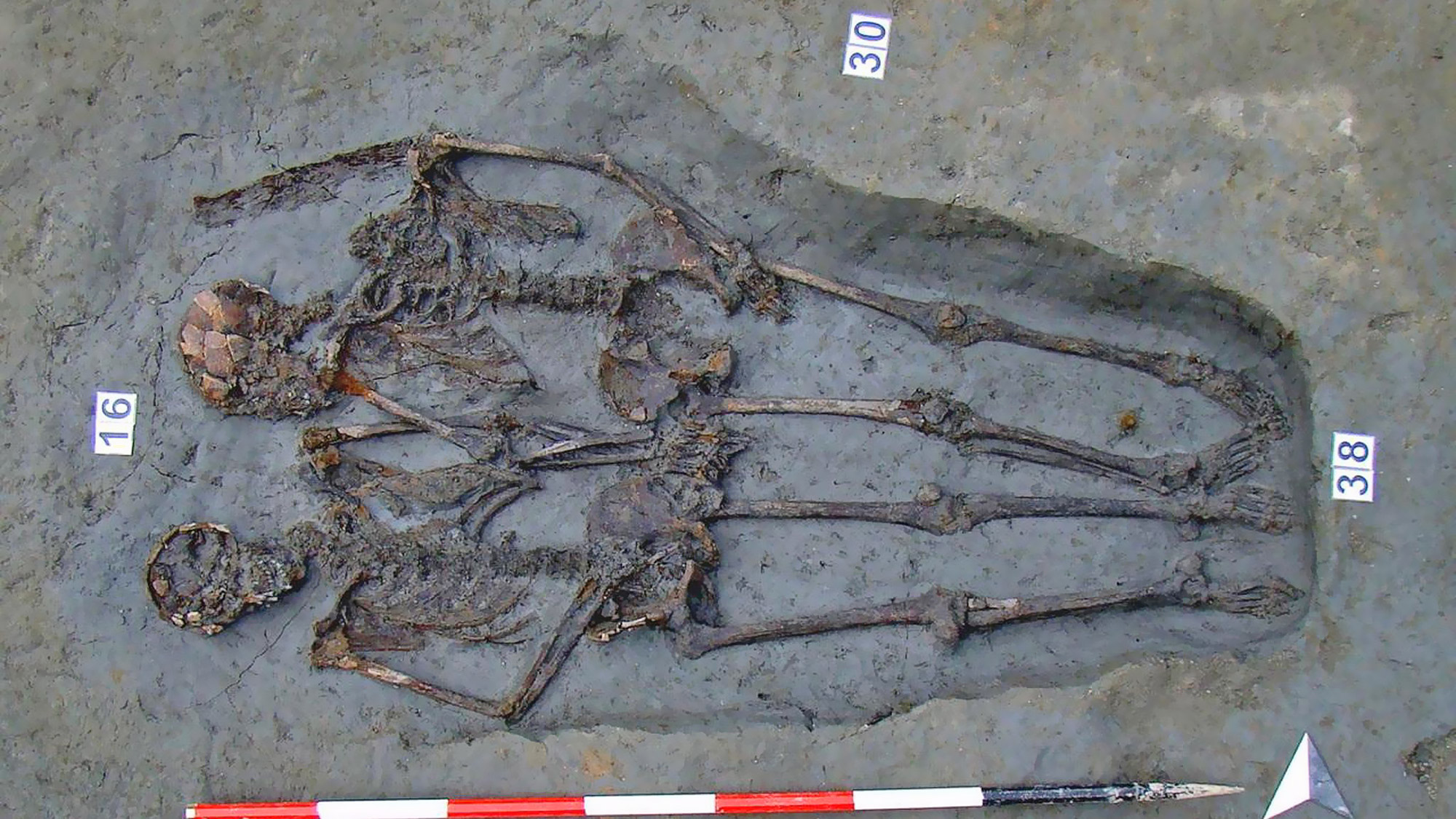'Lovers of Modena' Buried Hand-in-Hand Turn Out to Be Men
They could have been war buddies or cousins, or possibly in a romantic relationship.

The "lovers of Modena" — two 1,600-year-old skeletons found holding hands inside their grave — are both men, new research reveals.
There are few known examples in the ancient world of skeletons buried holding hands and most of those found have been male-female and not same sex.
Unearthed in an ancient cemetery in 2009, the skeletons attracted media attention because of their seemingly romantic death poses, which earned the skeletons the amorous nickname. But archaeologists couldn't determine the sexes of the perished lovers because of the poor condition of the skeletons.
However, a team of scientists has now analyzed the skeletons' teeth enamel and identified both skeletons as male, they reported online Sept. 11 in the journal Scientific Reports.
In the study, the scientists found that both skeletons' teeth had a protein called amelogenin isoform Y, which is found only in the enamel of males, the research team wrote in Scientific Reports.
Related: The 25 Most Mysterious Archaeological Finds on Earth
"We suggest that the 'Lovers of Modena' burial represents a voluntary expression of commitment between two individuals," the researchers wrote, adding that they do not know if their commitment was romantic.
Sign up for the Live Science daily newsletter now
Get the world’s most fascinating discoveries delivered straight to your inbox.
War buddies
In the same cemetery where the hand-holding men were buried, archaeologists found 11 other skeletons, some with injuries suggesting that these people had fought in a war.
"The two 'Lovers' could have been war comrades or friends, died together during a skirmish and, thus, buried within the same grave," the researchers wrote. "Alternatively, the two individuals were relatives, possibly cousins or brothers given their similar ages, sharing the same grave due to their family bond."
They added: "Although we cannot exclude that these two individuals were actually in love, it is unlikely that [the] people who buried them decided to show such [a] bond by positioning their bodies hand in hand." Many of the people in the region had converted to Christianity by the time the men were buried, and authorities held a negative view of same-sex relationships, going so far as to pass laws against it, the researchers noted.
Crumbling empire
At the time the men lived, the Roman Empire was divided in two, with Modena being controlled by the Western Roman Empire — which was crumbling under the weight of so-called barbarian attacks and internal unrest. The Western Roman Empire gradually lost territory and power to groups like the Vandals and Huns and collapsed completely in A.D. 476.
Though authorities in the area had developed negative views toward same-sex relationships by 1,600 years ago, there are reports of some previous Roman emperors having same-sex romantic relationships, openly acknowledging and celebrating them. For example, Emperor Hadrian (reign A.D. 117-138) openly displayed his affection for his male lover Antinous, dedicating games and sanctuaries in his honor.
The research team was led by Federico Lugli, a research fellow in the Department of Cultural Heritage at the University of Bologna, and Giulia Di Rocco, a researcher in the Department of Chemical and Geological Sciences at the University of Modena and Reggio Emilia.
- Bones with Names: Long-Dead Bodies Archaeologists Have Identified
- Photos: Decapitated Romans Found in Ancient Cemetery
- 25 Grisly Archaeological Discoveries
Originally published on Live Science.

Owen Jarus is a regular contributor to Live Science who writes about archaeology and humans' past. He has also written for The Independent (UK), The Canadian Press (CP) and The Associated Press (AP), among others. Owen has a bachelor of arts degree from the University of Toronto and a journalism degree from Ryerson University.









